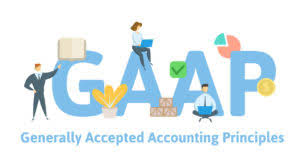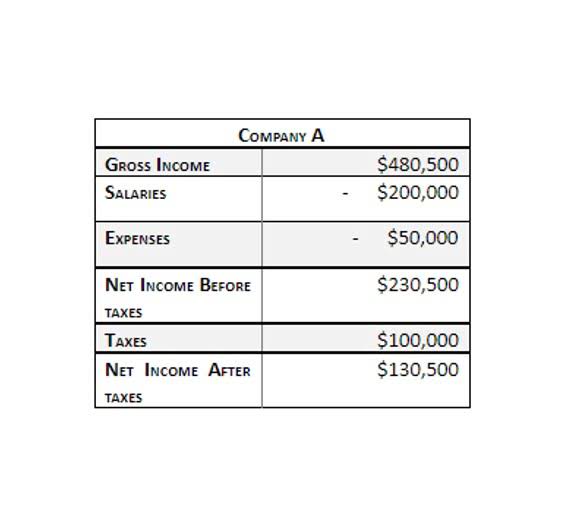
You can generate leads for your business by creating email campaigns and view performance with detailed analytics on open rates and click-through rates (CTR). Bonus depreciation can deliver serious tax savings for your small business. Don’t worry—these formulas are a lot easier to understand with a double declining balance method step-by-step example. Ask a question about your financial situation providing as much detail as possible. Our goal is to deliver the most understandable and comprehensive explanations of financial topics using simple writing complemented by helpful graphics and animation videos.
Fixed Asset Assumptions
When you’re a Pro, you’re able to pick up tax filing, consultation, and bookkeeping jobs on our platform while maintaining your flexibility. Get $30 off your tax filing job today and access an affordable, licensed Tax Professional. With a more secure, easy-to-use platform and an average Pro experience of 12 years, there’s no beating Taxfyle. Implement our API within your platform to provide your clients with accounting services. The beginning of period (BoP) book value of the PP&E for Year 1 is linked to our purchase cost cell, i.e.
Editorial Process
While it is more complicated than the straight-line method, it can be beneficial for companies looking to manage their finances effectively. Understanding how to calculate and apply this method can provide valuable insights into asset management and financial planning. The double declining balance method (DDB) describes an approach to accounting for the depreciation of fixed assets where the depreciation expense is greater in the initial years of the asset’s assumed useful life. The double-declining balance depreciation (DDB) method, also known as the reducing balance method, is one of two common methods a business uses to account for the expense of a long-lived asset. Similarly, compared to the standard declining balance method, the double-declining method depreciates assets twice as quickly. Like the double declining balance method, the sum-of-the-years’ digits method is another accelerated depreciation method.

What is the Double Declining Balance Method?
This concept behind the DDB method matches the principle that newly purchased fixed assets are more efficient in the earlier years than in the later years. But as time goes by, the fixed asset may experience problems due to wear and tear, which would result in repairs and maintenance costs. That’s why depreciation expense is lower in the later years because of the fixed asset’s decreased efficiency and high maintenance cost. For example, the depreciation expense for the second accounting year will be calculated by multiplying the depreciation rate (50%) by the carrying value of $1750 at the start of the year, times the time factor of 1. The benefit of using an accelerated depreciation method like the double declining balance is two-fold.

The double declining balance method is considered accelerated because it recognizes higher depreciation expense in the early years of an asset’s life. By applying double the straight-line depreciation rate to the asset’s book value each year, DDB reduces taxable income initially. This method falls under the category of accelerated depreciation methods, which means that it front-loads the depreciation expenses, allowing for a larger deduction in the earlier years of an asset’s life. Companies use depreciation to spread the cost of an asset out over its useful life. Accelerated depreciation is any method of depreciation used for accounting or income tax purposes that allows greater depreciation expenses in the early years of the life of an asset. Accelerated depreciation methods, such as double declining balance (DDB), means there will be higher depreciation expenses in the first few years and lower expenses as the asset ages.
Deskera Books is an online accounting software that your business can use to automate the process of journal entry creation and save time. The double-entry record will be auto-populated for each sale and purchase business transaction in debit and credit terms. Their values will automatically flow to respective financial reports.You can have access to Deskera’s ready-made Profit and Loss Statement, Balance Sheet, and other financial reports in an QuickBooks instant.
- Both methods reduce depreciation expense over time, but DDB does so more rapidly.
- Learn financial statement modeling, DCF, M&A, LBO, Comps and Excel shortcuts.
- It reflects the asset’s reduction in value due to wear and tear, obsolescence, or age.
- This section gives an insight into why some companies would not want to have a double declining balance method as an option to depreciate their assets.
- Since the assets will be used throughout the year, there is no need to reduce the depreciation expense, which is why we use a time factor of 1 in the depreciation schedule (see example below).

(You can multiply it by 100 to see it as a percentage.) This is also called the straight line depreciation rate—the percentage of an asset you depreciate each year if you use the straight line method. In the above example, we assumed a depreciation rate equal to twice the straight-line rate. However, many firms use a rate equal to 1.5 times the straight-line rate. Under the declining balance method, yearly depreciation is calculated by applying a fixed percentage rate to an asset’s remaining book value at the beginning of each year.

Everything to Run Your Business
The double-declining balance (DDB) method is a type of declining balance method that instead uses double the normal depreciation rate. The double declining balance (DDB) depreciation method is an accounting approach that involves depreciating certain assets at twice the rate outlined under straight-line depreciation. This results in depreciation being the highest in the first year of ownership and declining over time. The double declining balance depreciation method is a way to calculate how much an asset loses value over time. It’s called double declining because it uses a rate that is double the standard straight-line method. This method is often used for things like machinery or vehicles that lose value quickly at first.
- The beginning book value is multiplied by the doubled rate that was calculated above.
- It’s important to understand how this method works, especially if you’re studying accounting or managing finances.
- Next, divide the annual depreciation expense (from Step 1) by the purchase cost of the asset to find the straight line depreciation rate.
- The Units of Output Method links depreciation to the actual usage of the asset.
- Businesses choose to use the Double Declining Balance Method when they want to accurately reflect the asset’s wear and tear pattern over time.
- Implement our API within your platform to provide your clients with accounting services.
Double Declining Balance Method

Various depreciation methods are available to businesses, each with its own advantages and drawbacks. One such method is the Double Declining Balance Method, an accelerated depreciation technique that allows for a more significant portion of an asset’s cost to be expensed in the earlier years of its life. In my experience, using the double declining balance method can help businesses manage their taxes effectively by allowing them to report lower profits in the early https://www.bookstime.com/ years of an asset’s life. The double declining balance method accelerates depreciation, resulting in higher expenses in the early years, while the straight line method spreads the expense evenly over the asset’s useful life.
